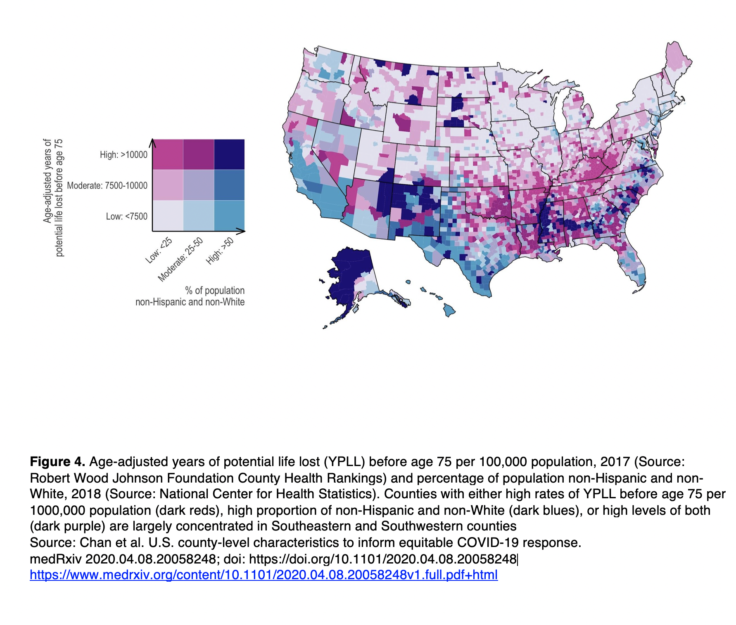The COVID-19 epidemic in the United States is already exposing a disastrous convergence of demographic and socioeconomic inequities that make some communities more vulnerable than others. Hotspots of COVID-19 are emerging in urban cities, from New York City, to Detroit, Milwaukee to New Orleans, and Chicago, with the greatest harm concentrated in neighborhoods that are home to Black and Hispanic populations. While social determinants influencing the impact of COVID-19 on communities have been addressed in the media, there is a dearth of scientific guidance to assist county- and state-level policymakers in responding to COVID-19 while accounting for these important county-level characteristics.
Researchers from the Harvard T.H. Chan School of Public Health’s Center for Communicable Disease Dynamics and the FXB Center for Health and Human Rights at Harvard have made available a data visualization tool for county officials to explore a range of biological, demographic and socioeconomic factors that may heighten the vulnerability of their communities, and impact the county’s ability to respond to this crisis in a just and equitable manner. The tool is available here: https://mkiang.shinyapps.io/county_risks
In the accompanying paper, (preprint published here: https://www.medrxiv.org/content/10.1101/2020.04.08.20058248v1.full.pdf+html), the researchers systematically examine a range of factors that will influence the risk of COVID-19 infection, severity of the disease, extent of the outbreak, and/or mortality all counties in the United States. The data and code to reproduce this analysis, based on publicly available data sources, is available here: https://github.com/mkiang/county_preparedness/.
While the East and West coast cities are particularly vulnerable owing to their densities (and travel routes) as we are already seeing, a large number of counties in the Southeastern states are home to millions that are particularly vulnerable to suffer disproportionately because of long-standing structural inequities and health disparities.
Strategies to protect those in the most vulnerable counties warrant urgent measures to better support the communities’ attempts at social distancing, and increased cooperation across county and state jurisdictions to supply personnel and equipment when needed.

